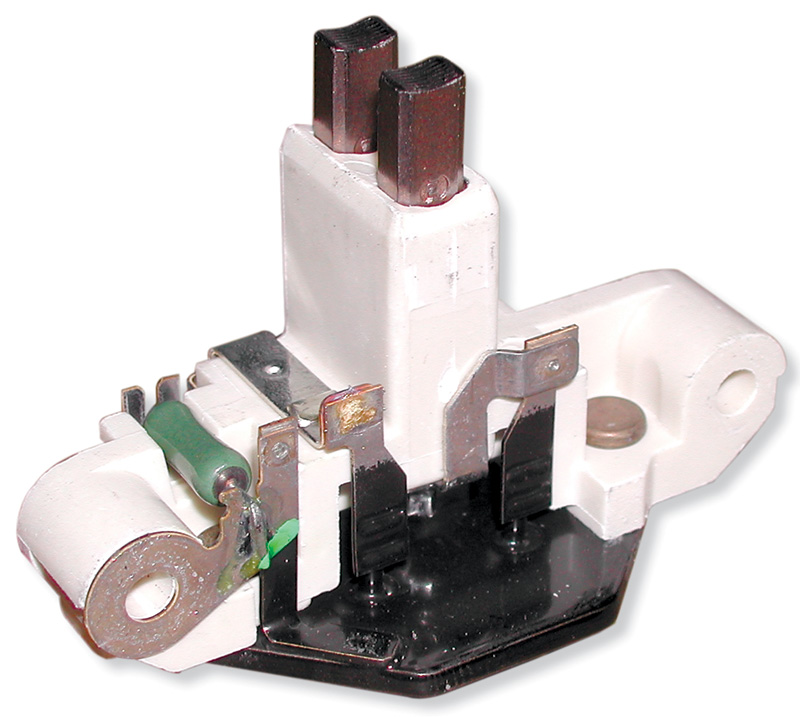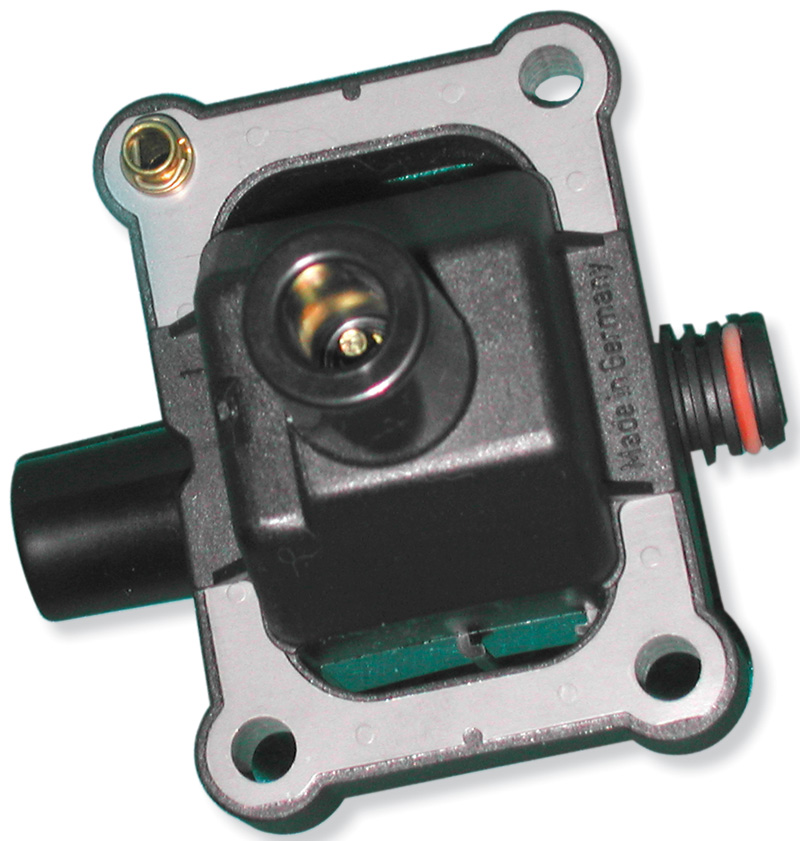Our all-electrical StarTuned includes all-electrical parts featured as well: alternator and (or?) voltage regulators, ignition coils.
 Alternator or Regulator
Alternator or Regulator
Except for the indictor on the instrument panel, the charging system in a Mercedes-Benz is independent of the rest of the electrical system. As long as the engine is turning fast enough, the drive belt works and the battery can accept charge, the alternator should put out enough current to support all the loads and keep the battery charged.
If not, however, many dealership shops prefer to replace the alternator complete rather than just the regulator/brush unit. While most alternators function up to the point when the field brushes sliding against the slip rings begin to lose a secure electrical contact (they naturally wear with age, and the spring is only so long), these shops find the predictable useful life of the rest of the alternator is often comparable to that of the just-failed regulator/brush unit.
 Alternators include bearings and diodes that don’t last forever. Even the drive pulley is sometimes subject to wear or damage. Replacement of the charging unit complete guarantees against comebacks from any of these problems.
Alternators include bearings and diodes that don’t last forever. Even the drive pulley is sometimes subject to wear or damage. Replacement of the charging unit complete guarantees against comebacks from any of these problems.
Still, there are a few occasions when you can be fairly confident in replacing the regulator/brush unit alone. If a battery develops an internal short and drives the system voltage down, with the consequence that the regulator toggles the alternator into full-capacity output for some time. Should inspection of the brushes flag wear and burning there but no detectable damage anywhere else in the unit, it might be a reasonable economy to replace the regulator/brush alone.
Ignition Coils
 A good ignition coil will last a long time before it fails, and if you find one you need to replace, don’t stop testing just at the coil itself. A failed coil is more often an effect than a cause, so check for excessively high resistance in any other parts of the secondary circuit, for poor connections at the primary circuit and for the condition of the spark plugs. Coil damage usually takes the form of internal insulation breakdown, but it can also appear as cracks in the case or as carbon tracks grounding the output spark. Misting water over the coil and other parts of the ignition secondary is still a good test for such problems, and it is a good idea to do coil and other secondary high voltage tests in enough shadow that you would be able to see sparks jumping to ground in unexpected places if that’s what’s going on.
A good ignition coil will last a long time before it fails, and if you find one you need to replace, don’t stop testing just at the coil itself. A failed coil is more often an effect than a cause, so check for excessively high resistance in any other parts of the secondary circuit, for poor connections at the primary circuit and for the condition of the spark plugs. Coil damage usually takes the form of internal insulation breakdown, but it can also appear as cracks in the case or as carbon tracks grounding the output spark. Misting water over the coil and other parts of the ignition secondary is still a good test for such problems, and it is a good idea to do coil and other secondary high voltage tests in enough shadow that you would be able to see sparks jumping to ground in unexpected places if that’s what’s going on.
Get a replacement coil by part number, not just by appearance. Just because an unidentified coil will bolt in place of its predecessor doesn’t mean it is the right coil for the vehicle. Even different accessory packages can sometimes lead to specifying more than one different coil for very similar car models.






0 Comments